- Joined
- Jan 6, 2013
- Messages
- 5,647
- Reaction score
- 11,334
1. The History
Abridge and adapted from Wikipedia:
Cwmorthin Quarry is a slate quarry located to the west of Tanygrisiau, near Blaneau Ffestiniog. The quarry cum mine had a chequered history dogged by mine collapses, terriority disputes with nearby rival mines and multiple financial difficulties.
Slate extraction began at Cwmorthin in 1810 via a small quarry opened by the Casson family. Two of the five Blaenau Ffestiniog slate veins outcropped here sloping downwards at angles of between 20 and 45 degrees. To avoid the expense of removing large volumes of the overlying rock quarrying soon turned into mining with mine chambers following the vein below ground. This early quarrying had ended by 1830 until 1840 when John Edwards and his partner Magnes obtained a lease which was, in turn transferred to W B Chorley from London. Chorley's involvement with the quarry continued until about 1860.
From about 1859 the quarry was worked by a group of men under an informal arrangement and who leased a wharf at Porthmadog harbour in 1860. A year later in 1861, the Cwmorthin Slate Company was formed. With authorised share capital of £100,000, they purchased the Cwmorthin Isaf estate and part of Tanygrisiau village The 1 ft 11 1⁄2 inch Cwmorthin Tramway was constructed to connect the quarry with the nearby Ffestiniog Railway at Tanygrisiau.
Lake Mill, a dressing mill where the blocks of slate were split and dressed to form roofing slates, was built on the eastern shore of Llyn Cwmorthin. A second mill, called Cross Mill, was built a little further down the valley, so it could utilise the water from Llyn Cwmorthin to feed its water wheel. Two rope-worked inclined planes allowed the tramway to negotiate the difference in level between the mill and the Ffestiniog Railway.
Quarry output steadily increased from 350 tons in 1862, to a massive 12,500 tons of finished slate in 1876 with around 96,000 tons of slate produced in total. This was achieved by the removal of approximately 1 million tons of rock, on the basis of 1 ton of slate to 10 tons of waste. Unfortunately, the quarry gained a reputation for poor working conditions and was known locally as "The Slaughterhouse" band between 1875 and 1893 there were 21 deaths out of a workforce of around 550.
The Metalliferous Mines Act 1872 required all mines to keep records of their operations including reporting fatal fatalities, details of the workforce and mine output. Cwmorthin argued this didn’t apply to them as they were a quarry, not a mine. However, after a fatality there in 1875, a test case was brought against them. They lost the case and the mine was bankrupted
This led to the formation of the New Cwmorthin company in 1876. Going forward there were a number of local disputes with the Welsh Slate Company, the Rhiwbryfdir Slate Company and Holland's Slate Company who were all working the same veins and where companies were encroaching on each other's territory. An agreement made in 1876. By 1882 the quarry was employing over 500 men and slates was being produced in three mills, two powered by water wheels and one by a steam engine. Later, in 1884, The Oakeley Slate Quarries Company Limited was formed to manage the nearby quarries. This coincided with a deterioration in relationships as Cwmorthin’s workings in the Back Vein collapsed. Production fell from 11,600 tons that year to 6,900 tons in 1886, with nearly half of the mine becoming inaccessible. The opening of new, lower chambers did not produce enough slate to cover the additional costs including pumping-out costs and the costs of raising the slate up to the mill level. Despite producing 132,866 tons of slate between 1876 and 1888, the writing was on the wall and the company went bust in 1888.
Meanwhile, north-east over the other side of Allt Fawr, in 1884, things weren’t going well for the Welsh Slate Company either, not helped by a major fall that saw over 6 million tons of rock collapse into their workings. A legal battle between the owner, the Oakeley Estate and Welsh Slate Company ensued. The latter lost and decided to surrender their lease. The up-shot was that New Welsh Slate Company rose out of the ashes of WSC and New Cwmorthin in 1889. On purchasing the Cwmorthin freehold for £83,000, the quarry was extended downwards to five floors below the lake level. Having finished the inclines to serve them, which were started after the 1884 Cwmorthin fall, steam engines the powered the pumps to keep the workings dry. In 1897, the company employed 290 people in total with 153 working underground. Again, financial troubles weren’t far away though. However, the new company was soon in trouble. The long exit tramway pushed up the price of their finished slates, debts gradually rose, and in 1900 the quarry was put up for auction, with a reserve price of £12,000. With the peak demand for slate having passed and the industry going into recession, unsurprisingly the reserve wasn’t reached and the company was wound up two years later in 1902.
The Oakeley Company then bought the Cwmorthin operation for £10,000, with little intention of working it. Ever since 1889 they had been concerned about the western end of their mine. The pillars left between the chambers by the Cwmorthin workings were thinner than normal practice, and Oakley feared another collapse along with the risk of flooding. Hence their precautionary purchase of Cwmorthin. The Lake Mill was demolished, the mine’s machinery stripped and the workings allowed to flood. All contrary to the advice of their own consulting engineer. A connecting link on floor C in the South Vein was made between the two quarries allowing water to drain into Oakeley's Middle Quarry. The workings in the North Vein flooded up to Lake level and could no longer be inspected.
Although the mine had officially been closed for over 20 years, local men had continued to remove slate from the upper workings, and after the First World War, Oakeley explored re-opening these levels. An inspection in the 1920s revealed that much of this part of the mine had been wrecked by rock falls and was completely unsafe. In 1925 the tramway connecting the Ffestiniog Railway to the mill was renewed, along with the restoration of the surface inclines and the lower mills. Sadly, there was little usable slate left so attention turned to the unflooded lower levels. Productive rock was found, resulting in the South Vein incline and its connecting tramways being restored. Additionally, a previously unworked section of the North Vein was accessed by driving a new level to it. These measures resulted in a good supply of slate, but the mine was hampered by transportation costs and a lack of power. The Oakeley Quarries were powered by electricity and compressed air, and a plan to drain the flooded North Vein workings was drawn up in 1932, allowing power supplies to be brought through from the Oakeley side. The Oakeley workings were underneath the lower Cwmorthin chambers, so the plan was for Cwmorthin to be drained in controlled fashion. In 1932 surface work at Cwmorthin also resumed, resulting in the North Sink incline being electrified, and the instillation on air compressors.
World War II saw the quarry being mothballed with only the pumps kept running to prevent flooding. In the 1960s machinery that was still accessible, was removed and in 1970 when the main Oakeley Quarries closed, Cwmorthin was sold off separately. Again, some local men worked it on a small scale, clearing the tunnels, installing a saw in one of the chambers, and using a Land Rover for transport. Outside capital saw a mill being rebuilt in the 1980s, but this scheme failed and although a local company reopened the mine in 1995, work had all but ceased by 1997.
2. The Explore
More of a family walk in the beautiful summer evening sun around the over-ground remains rather than an underground adventure. It made for an enjoyable couple of hours. Underground looks fascinating so maybe a revisit here in the future is in order, perhaps with Go Below.
3. The Photos
Walking up the track to the lake:
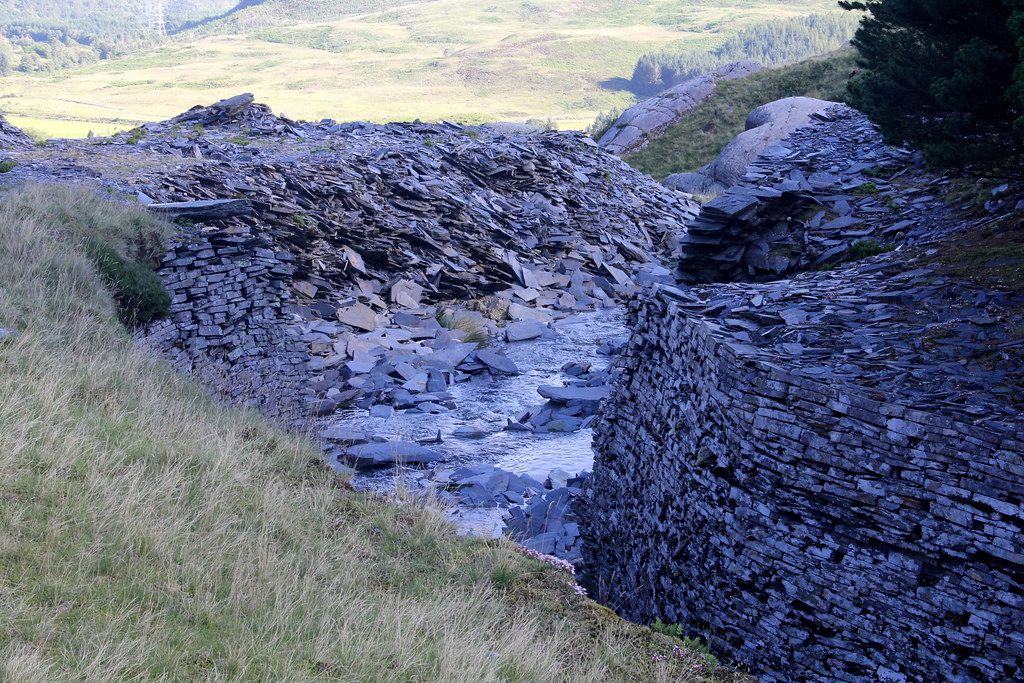 img7492 by HughieDW, on Flickr
img7492 by HughieDW, on Flickr
You can just about make out a building here:
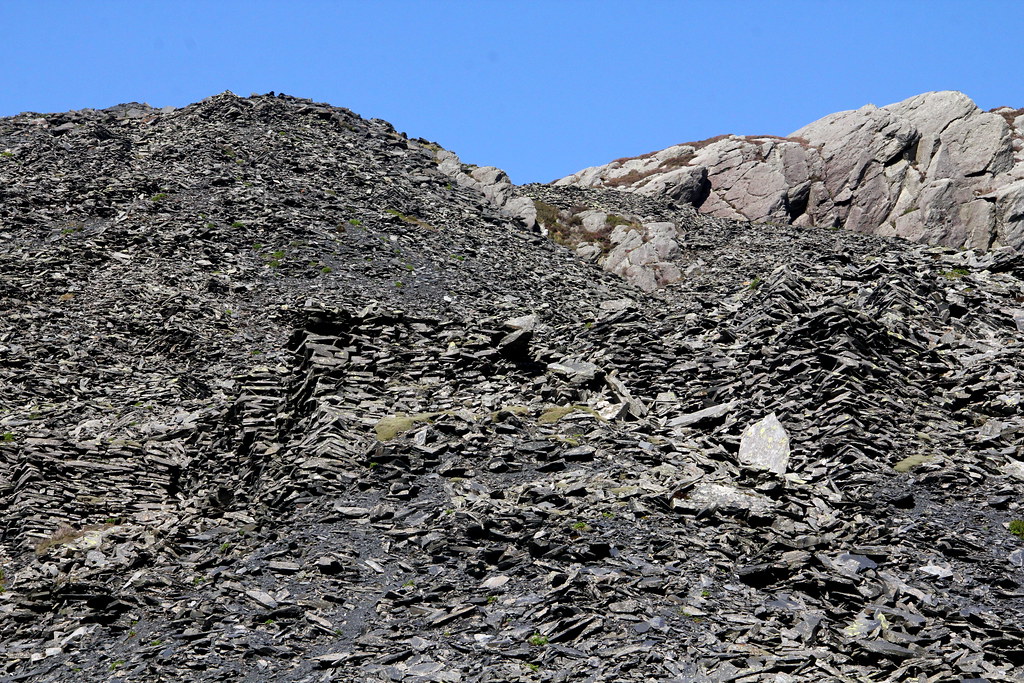 img7494 by HughieDW, on Flickr
img7494 by HughieDW, on Flickr
Once at the top, the row of worker’s cottages are very photogenic:
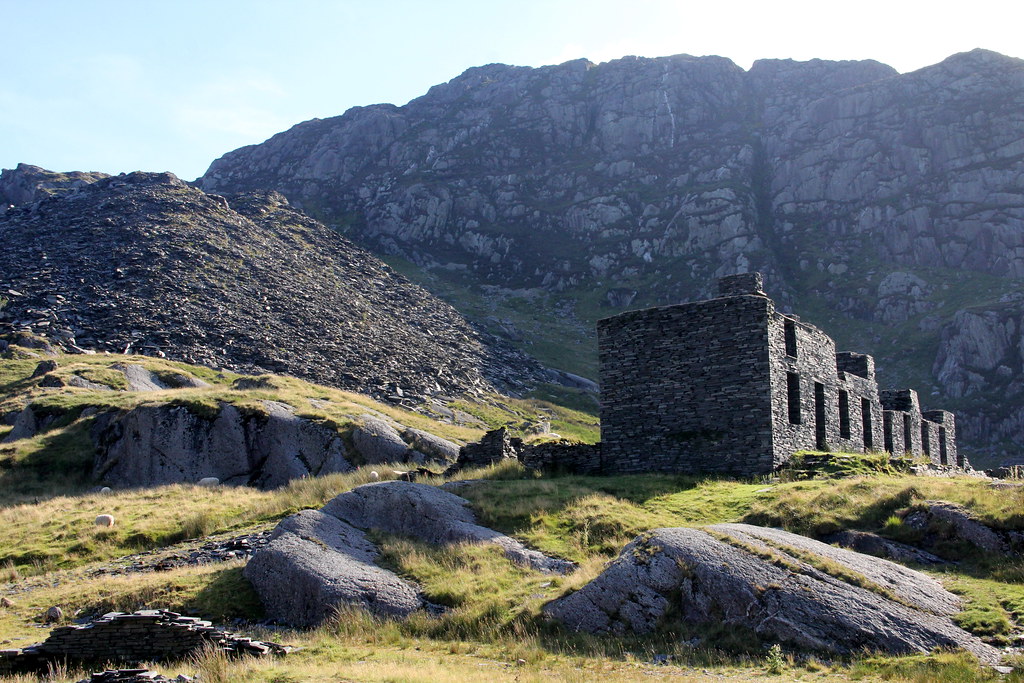 img7498 by HughieDW, on Flickr
img7498 by HughieDW, on Flickr
End on view:
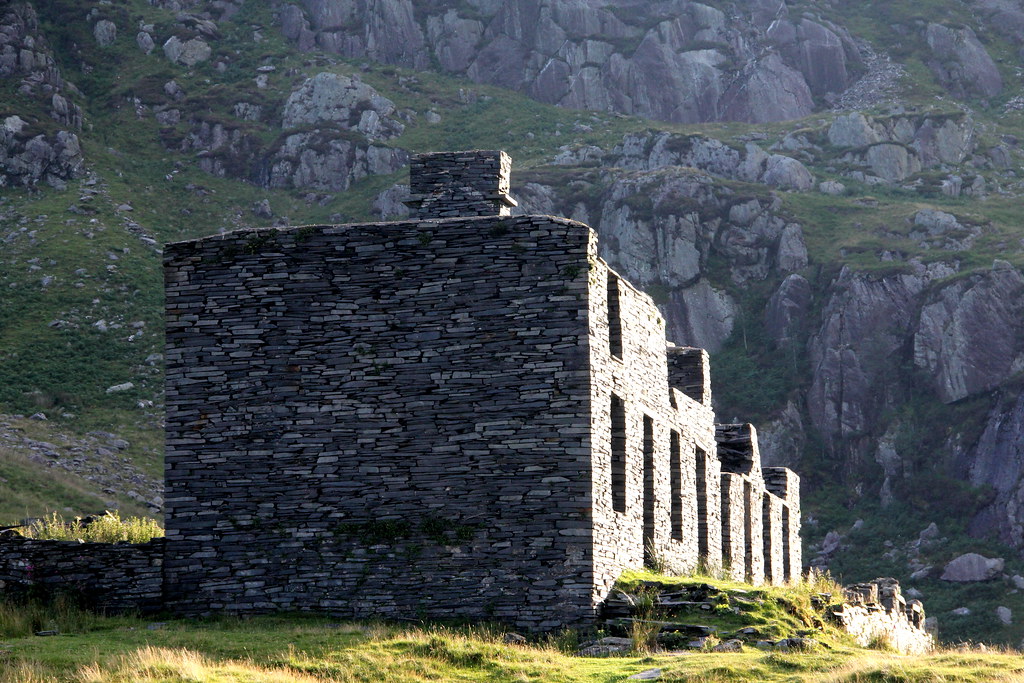 img7563 by HughieDW, on Flickr
img7563 by HughieDW, on Flickr
Front view:
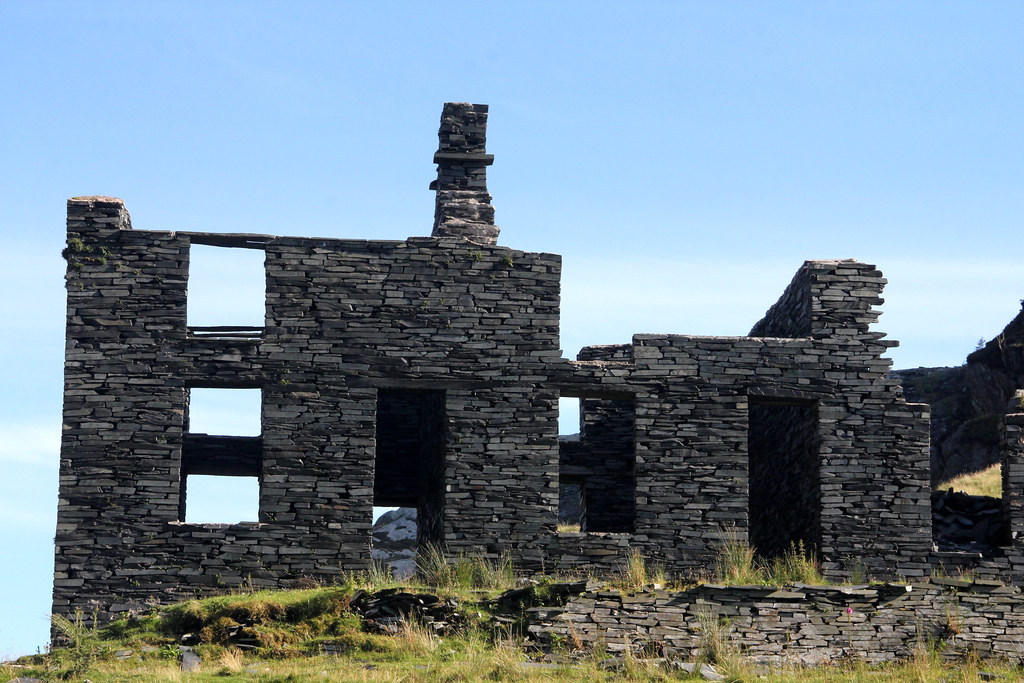 img7510 by HughieDW, on Flickr
img7510 by HughieDW, on Flickr
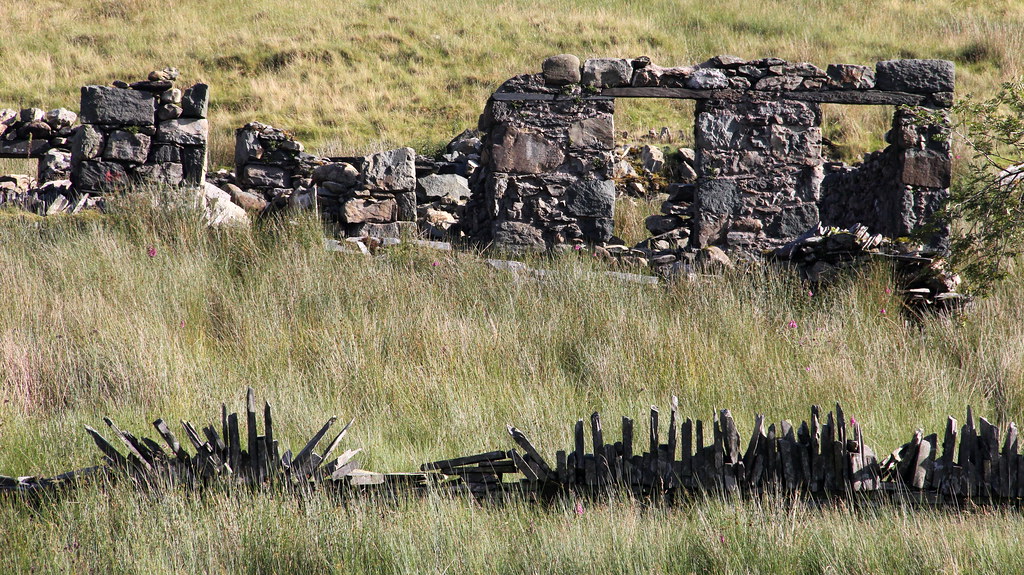 img7514 by HughieDW, on Flickr
img7514 by HughieDW, on Flickr
Allt Fawr looms above Cwmorthin lake:
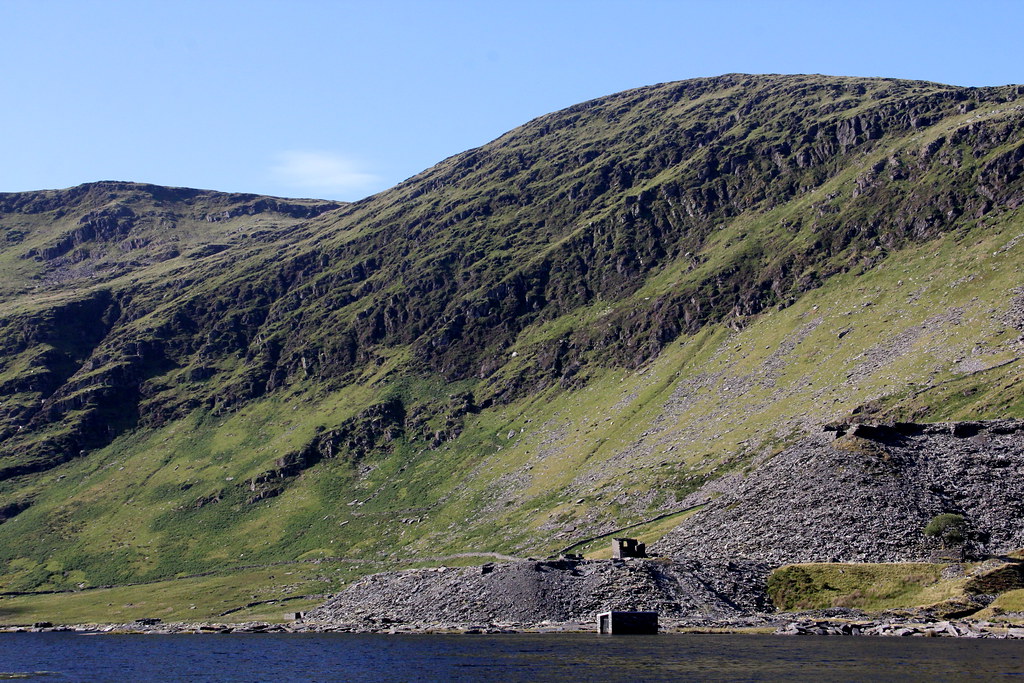 img7502 by HughieDW, on Flickr
img7502 by HughieDW, on Flickr
Not sure whether this is a winding house:
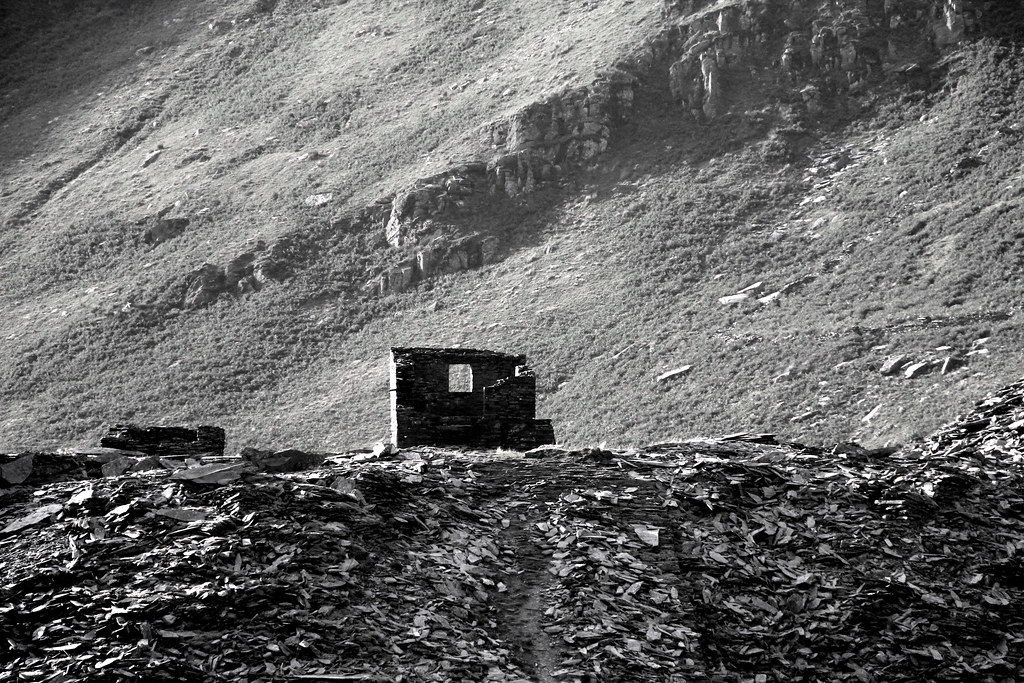 img7560bw by HughieDW, on Flickr
img7560bw by HughieDW, on Flickr
Not too sure what this building was:
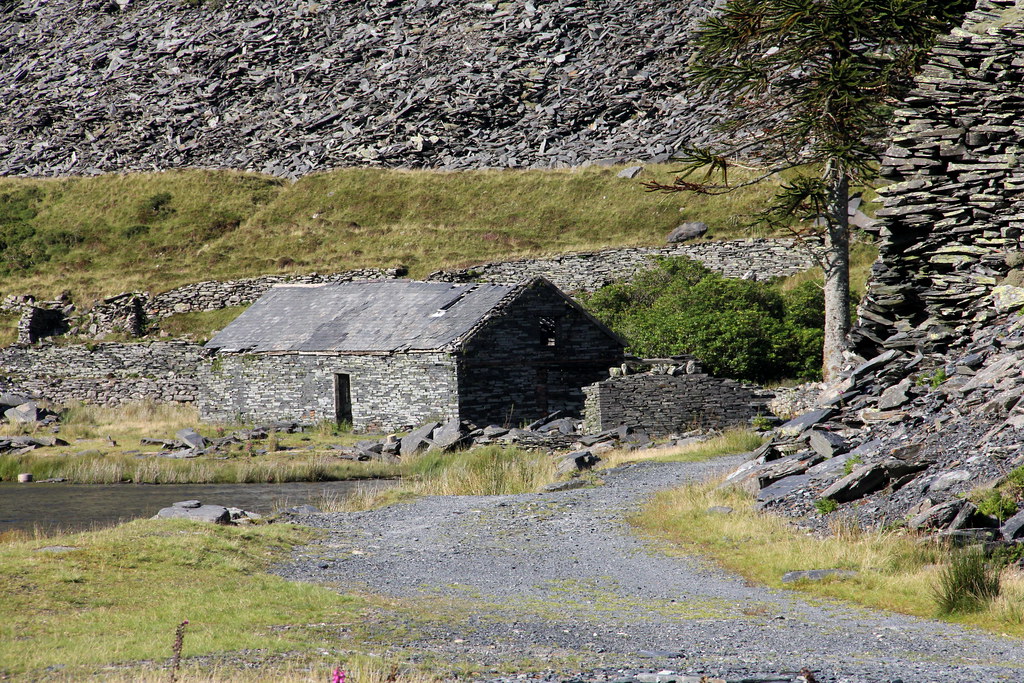 img7501 by HughieDW, on Flickr
img7501 by HughieDW, on Flickr
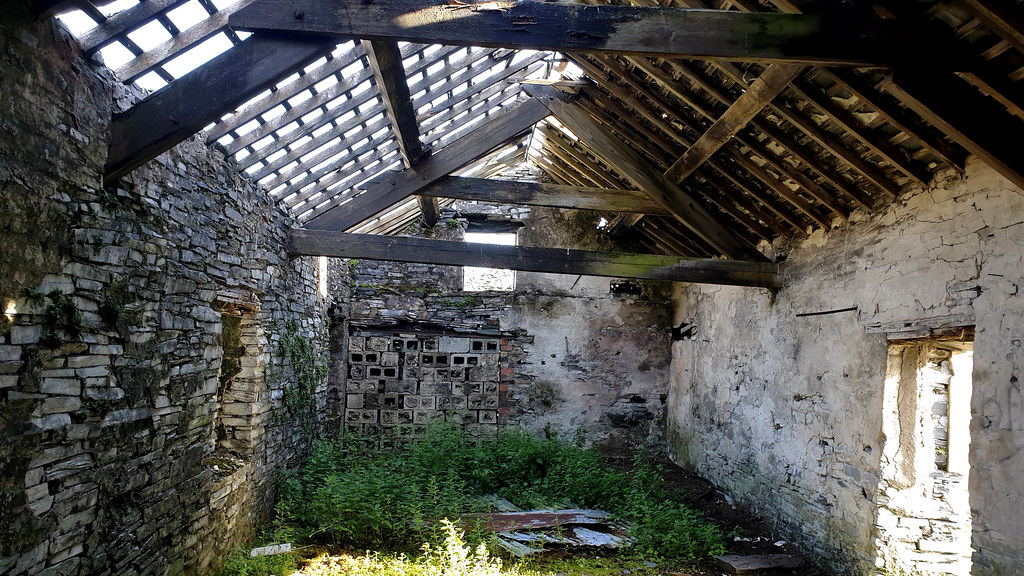 Cwmorthin 06 by HughieDW, on Flickr
Cwmorthin 06 by HughieDW, on Flickr
Locked mine entrance:
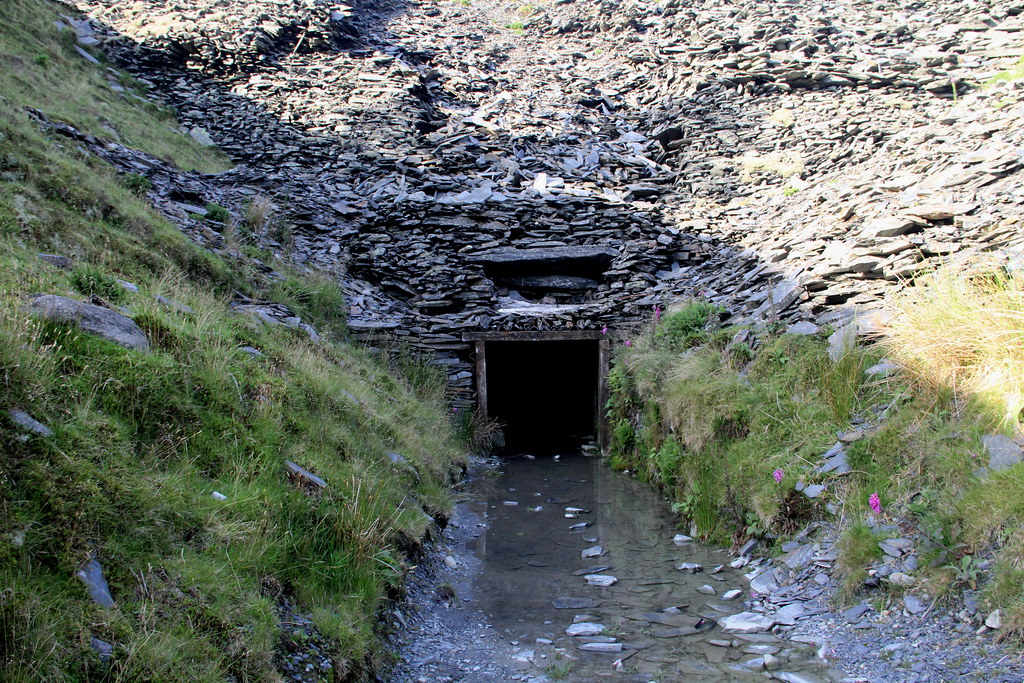 img7552 by HughieDW, on Flickr
img7552 by HughieDW, on Flickr
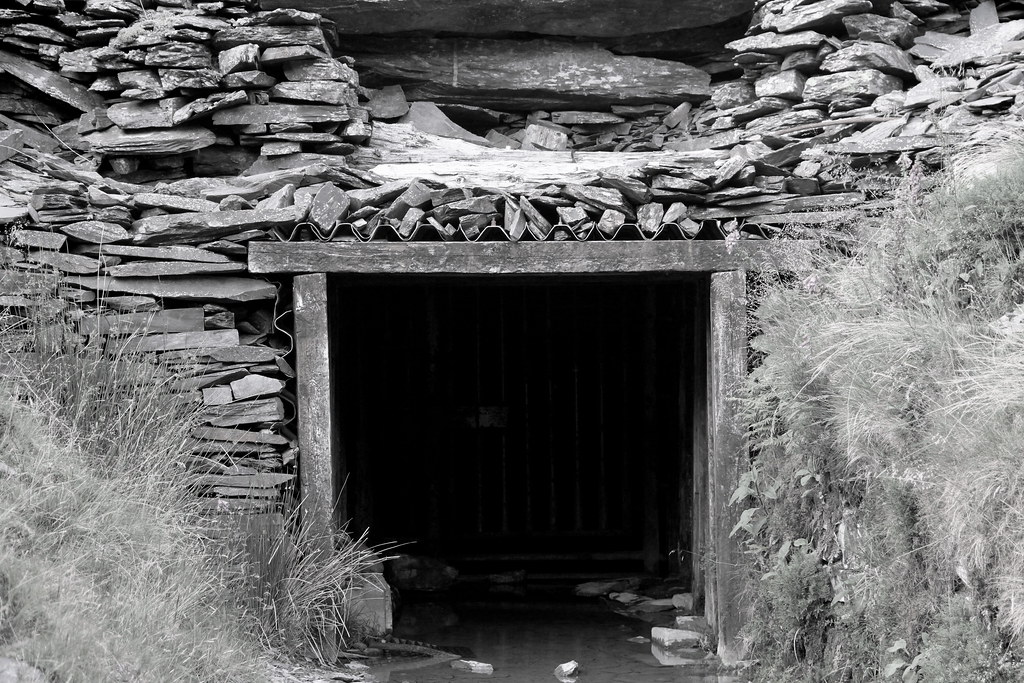 img7553bw by HughieDW, on Flickr
img7553bw by HughieDW, on Flickr
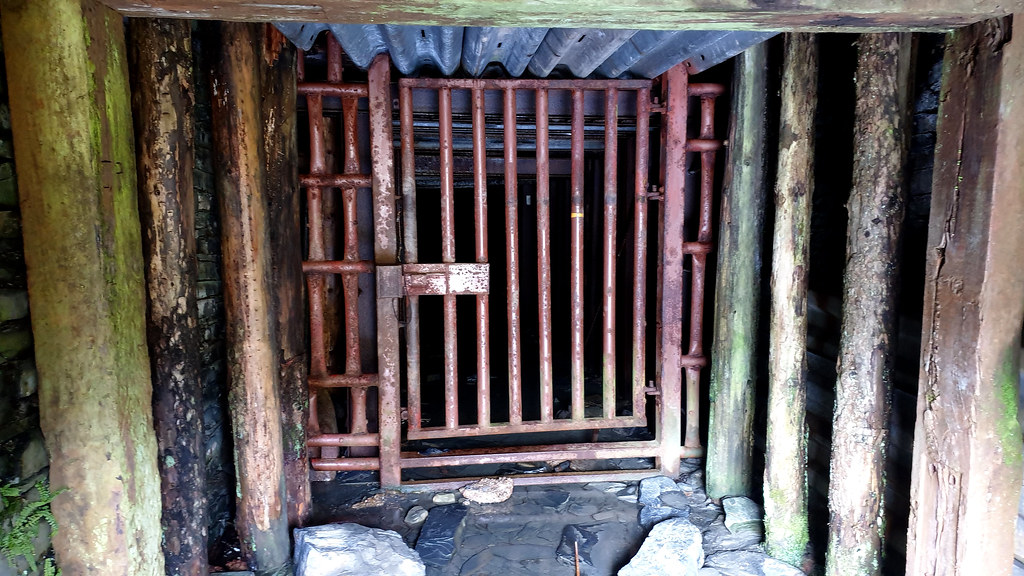 Cwmorthin 08 by HughieDW, on Flickr
Cwmorthin 08 by HughieDW, on Flickr
Looking across the lake at the adit:
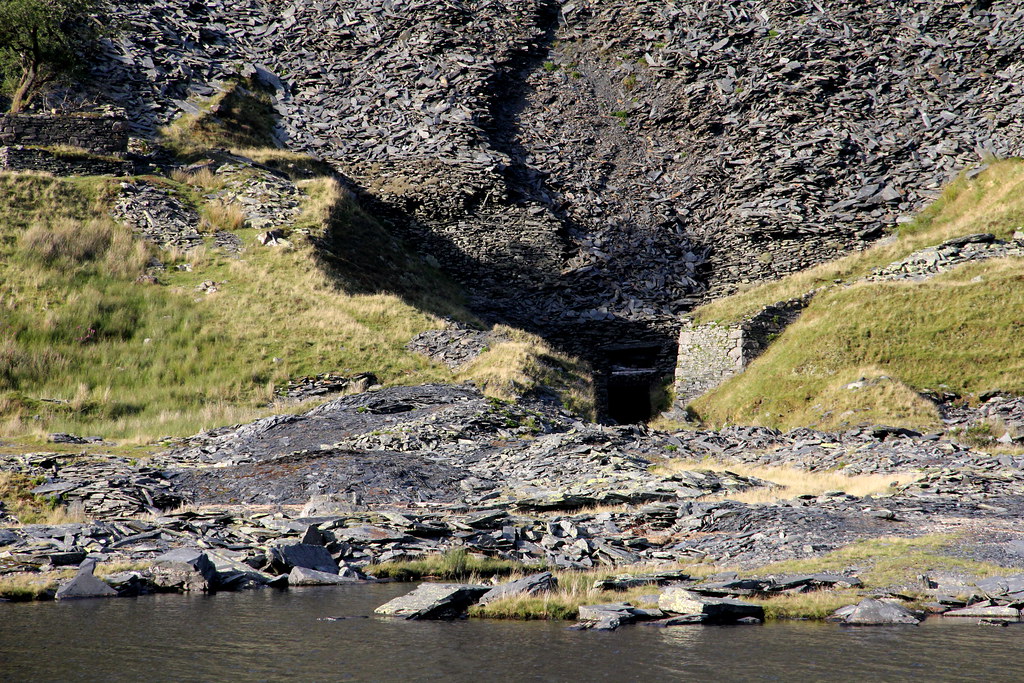 img7551 by HughieDW, on Flickr
img7551 by HughieDW, on Flickr
Capel Rhosydd. Archive pictures show it retaining its roof in 1995. It’s in a much poorer way today:
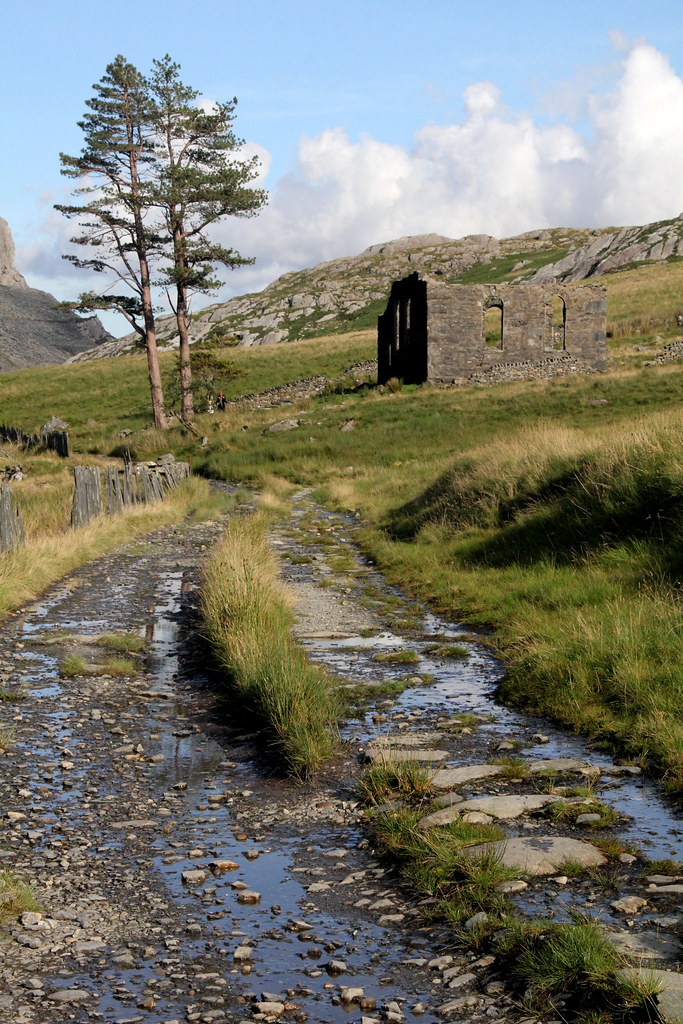 img7550 by HughieDW, on Flickr
img7550 by HughieDW, on Flickr
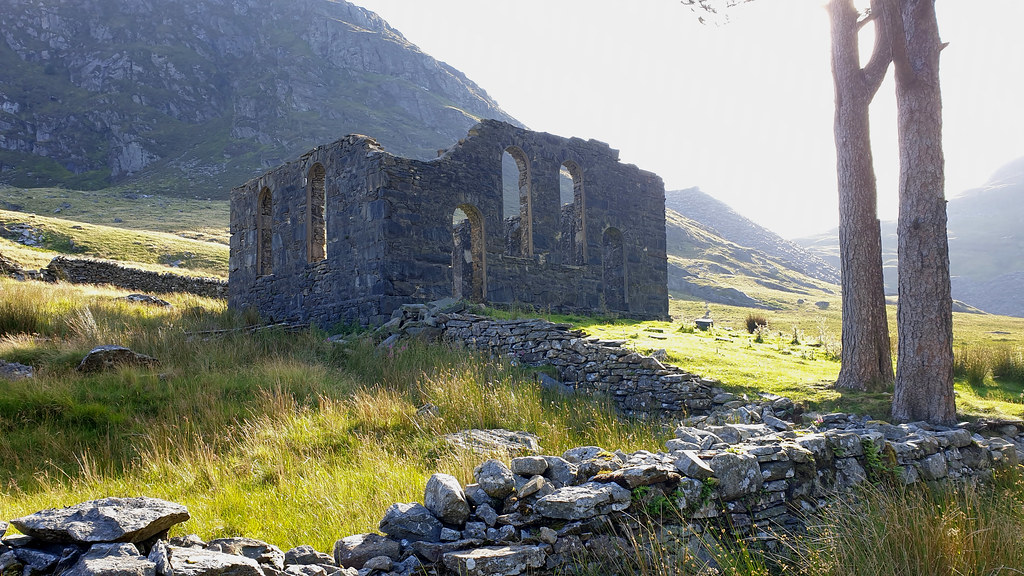 Cwmorthin 01 by HughieDW, on Flickr
Cwmorthin 01 by HughieDW, on Flickr
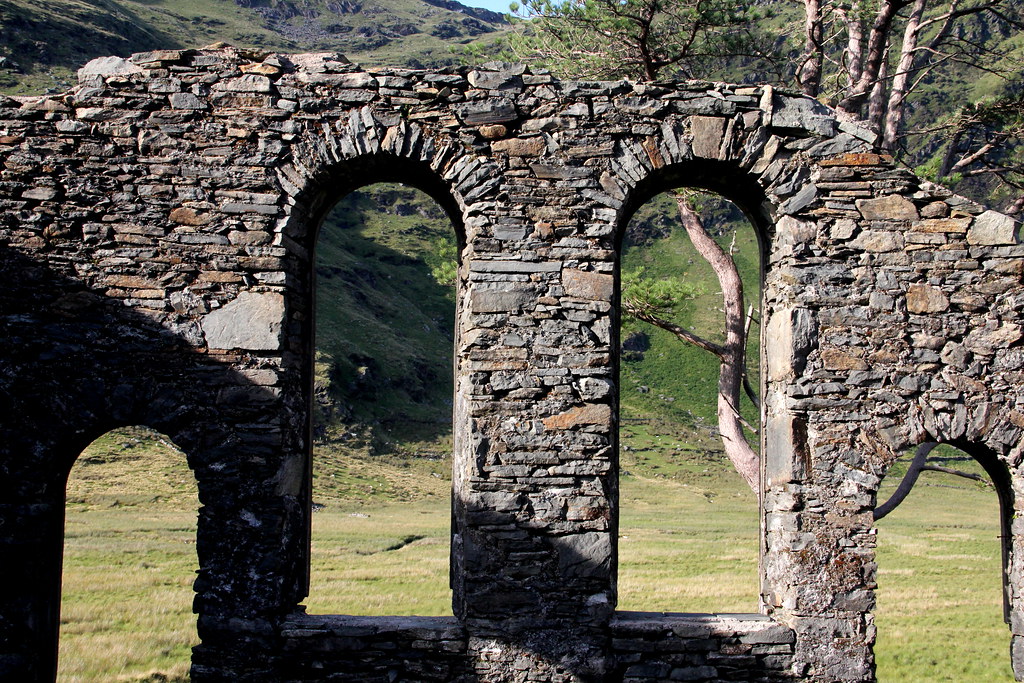 img7529 by HughieDW, on Flickr
img7529 by HughieDW, on Flickr
Farmstead between Cwmorthin and Rhosydd quarries:
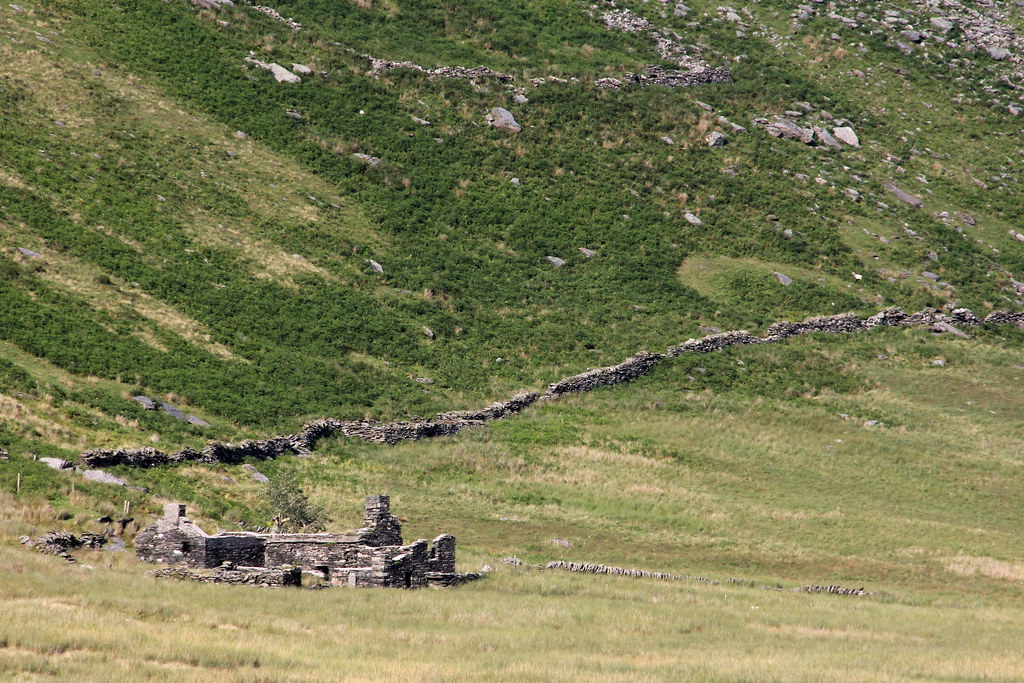 img7532 by HughieDW, on Flickr
img7532 by HughieDW, on Flickr
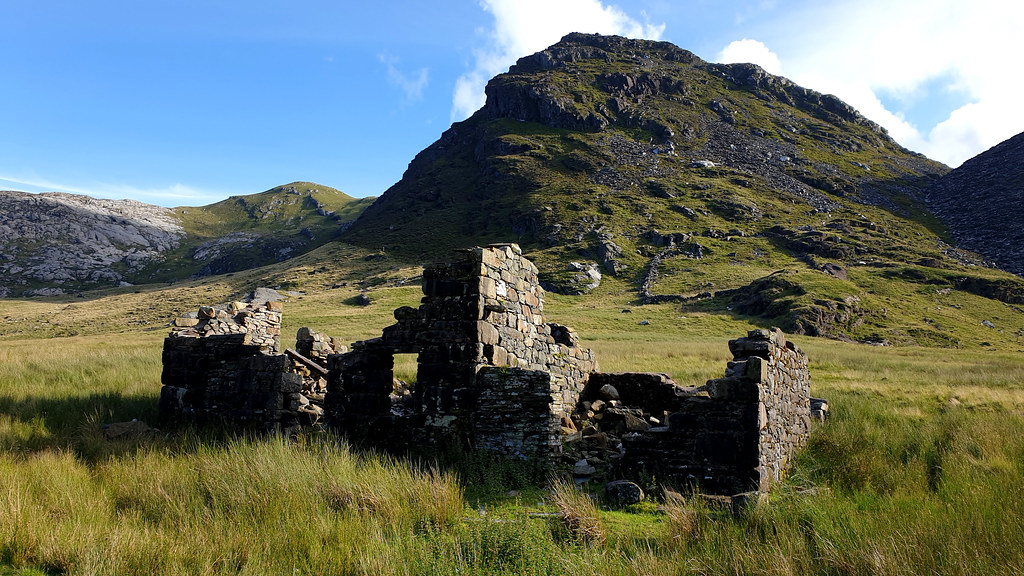 Cwmorthin 03 by HughieDW, on Flickr
Cwmorthin 03 by HughieDW, on Flickr
Distant view of the Rhosydd Quarry Managers house built in 1860:
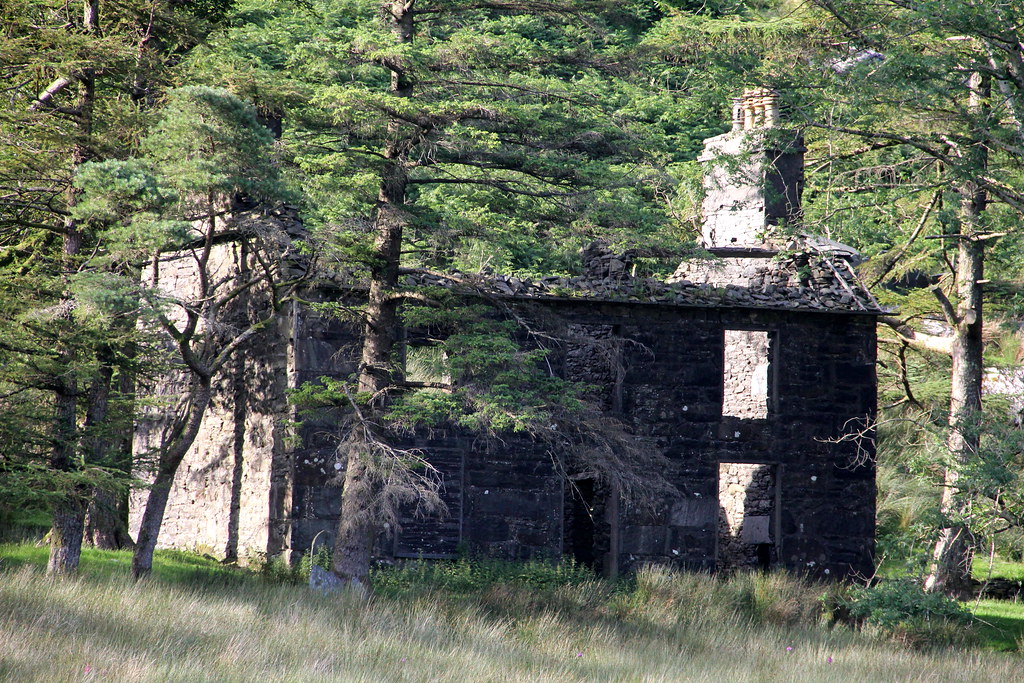 img7549 by HughieDW, on Flickr
img7549 by HughieDW, on Flickr
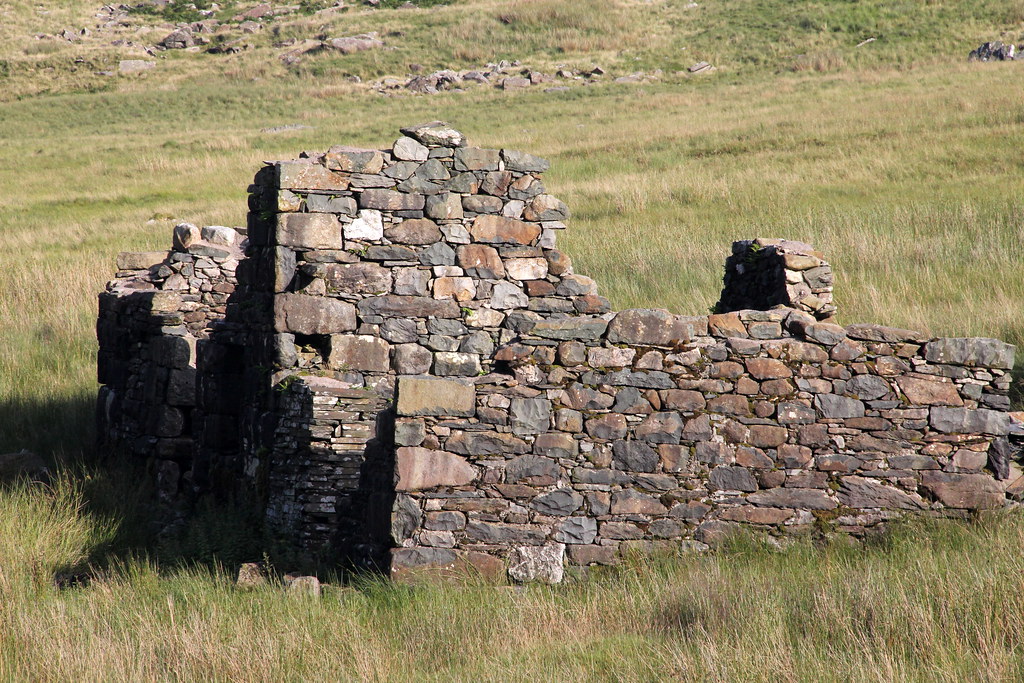 img7546 by HughieDW, on Flickr
img7546 by HughieDW, on Flickr
We’re now into Rhosydd quarry. Here’s one of the spoil tips:
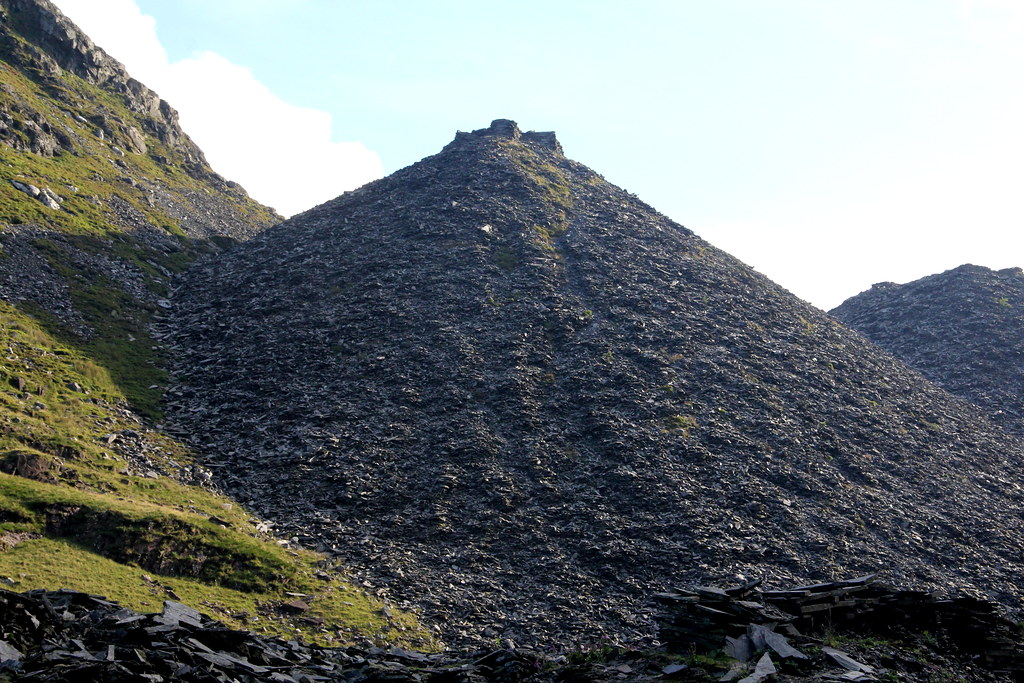 img7547 by HughieDW, on Flickr
img7547 by HughieDW, on Flickr
 img7545 by HughieDW, on Flickr
img7545 by HughieDW, on Flickr
 img7544bw by HughieDW, on Flickr
img7544bw by HughieDW, on Flickr
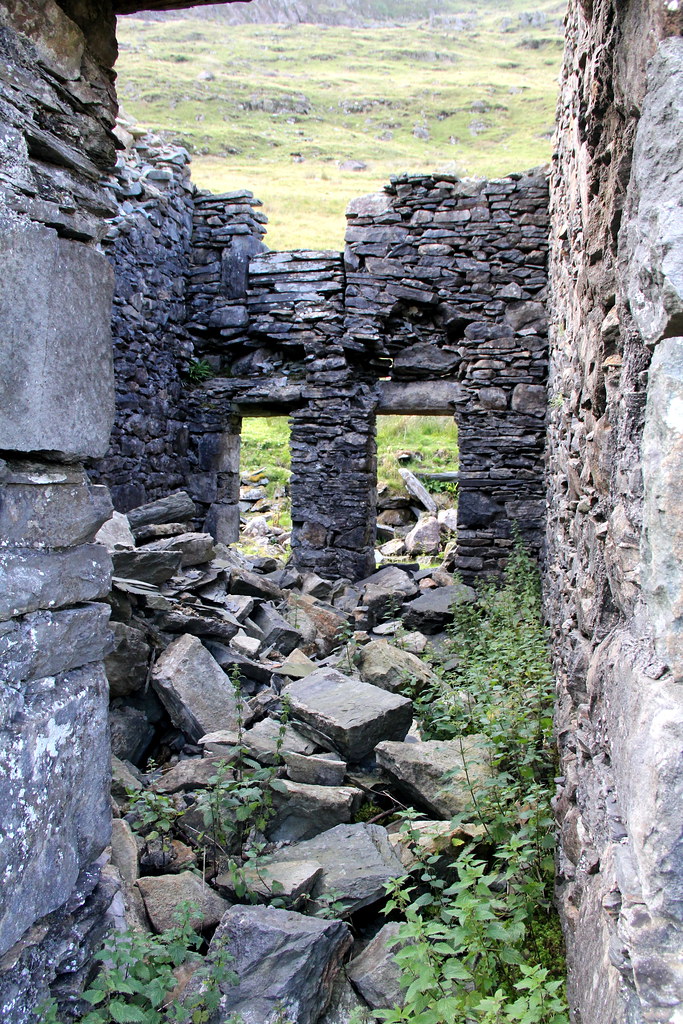 img7542 by HughieDW, on Flickr
img7542 by HughieDW, on Flickr
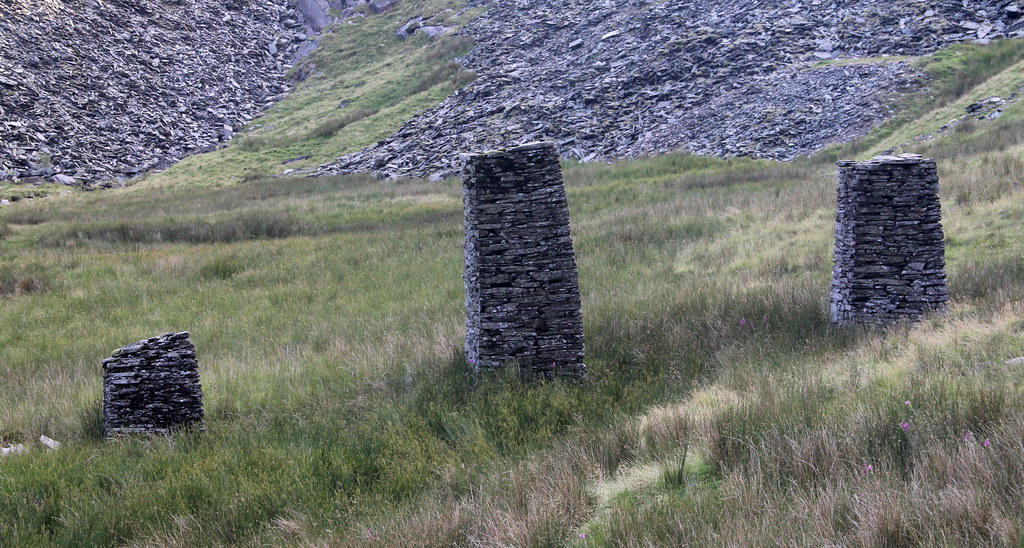 img7539 by HughieDW, on Flickr
img7539 by HughieDW, on Flickr
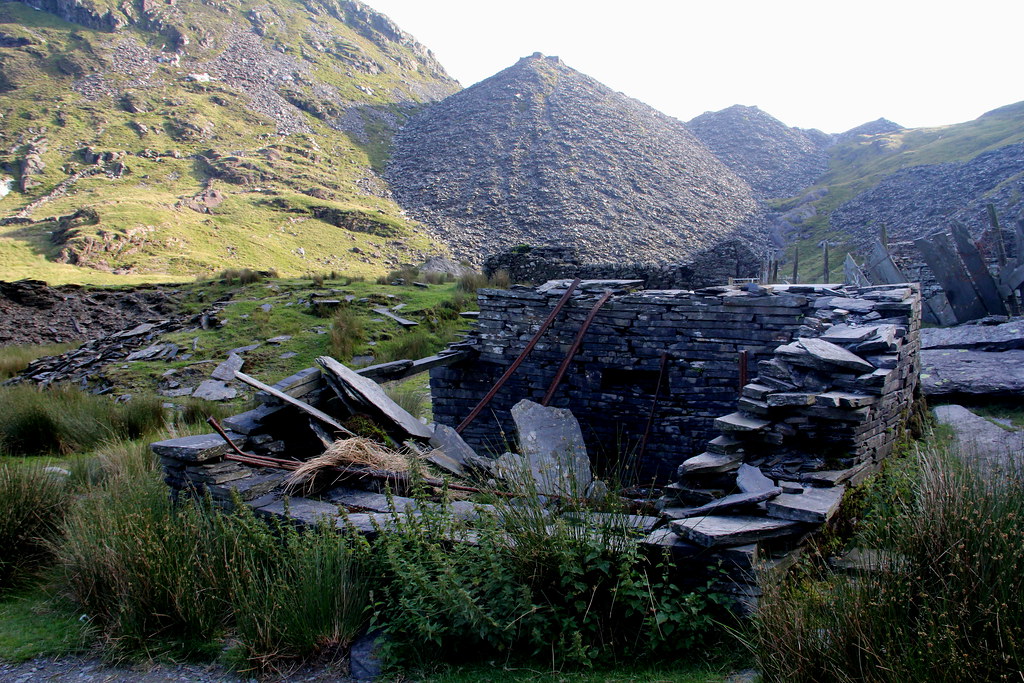 img7535 by HughieDW, on Flickr
img7535 by HughieDW, on Flickr
Abridge and adapted from Wikipedia:
Cwmorthin Quarry is a slate quarry located to the west of Tanygrisiau, near Blaneau Ffestiniog. The quarry cum mine had a chequered history dogged by mine collapses, terriority disputes with nearby rival mines and multiple financial difficulties.
Slate extraction began at Cwmorthin in 1810 via a small quarry opened by the Casson family. Two of the five Blaenau Ffestiniog slate veins outcropped here sloping downwards at angles of between 20 and 45 degrees. To avoid the expense of removing large volumes of the overlying rock quarrying soon turned into mining with mine chambers following the vein below ground. This early quarrying had ended by 1830 until 1840 when John Edwards and his partner Magnes obtained a lease which was, in turn transferred to W B Chorley from London. Chorley's involvement with the quarry continued until about 1860.
From about 1859 the quarry was worked by a group of men under an informal arrangement and who leased a wharf at Porthmadog harbour in 1860. A year later in 1861, the Cwmorthin Slate Company was formed. With authorised share capital of £100,000, they purchased the Cwmorthin Isaf estate and part of Tanygrisiau village The 1 ft 11 1⁄2 inch Cwmorthin Tramway was constructed to connect the quarry with the nearby Ffestiniog Railway at Tanygrisiau.
Lake Mill, a dressing mill where the blocks of slate were split and dressed to form roofing slates, was built on the eastern shore of Llyn Cwmorthin. A second mill, called Cross Mill, was built a little further down the valley, so it could utilise the water from Llyn Cwmorthin to feed its water wheel. Two rope-worked inclined planes allowed the tramway to negotiate the difference in level between the mill and the Ffestiniog Railway.
Quarry output steadily increased from 350 tons in 1862, to a massive 12,500 tons of finished slate in 1876 with around 96,000 tons of slate produced in total. This was achieved by the removal of approximately 1 million tons of rock, on the basis of 1 ton of slate to 10 tons of waste. Unfortunately, the quarry gained a reputation for poor working conditions and was known locally as "The Slaughterhouse" band between 1875 and 1893 there were 21 deaths out of a workforce of around 550.
The Metalliferous Mines Act 1872 required all mines to keep records of their operations including reporting fatal fatalities, details of the workforce and mine output. Cwmorthin argued this didn’t apply to them as they were a quarry, not a mine. However, after a fatality there in 1875, a test case was brought against them. They lost the case and the mine was bankrupted
This led to the formation of the New Cwmorthin company in 1876. Going forward there were a number of local disputes with the Welsh Slate Company, the Rhiwbryfdir Slate Company and Holland's Slate Company who were all working the same veins and where companies were encroaching on each other's territory. An agreement made in 1876. By 1882 the quarry was employing over 500 men and slates was being produced in three mills, two powered by water wheels and one by a steam engine. Later, in 1884, The Oakeley Slate Quarries Company Limited was formed to manage the nearby quarries. This coincided with a deterioration in relationships as Cwmorthin’s workings in the Back Vein collapsed. Production fell from 11,600 tons that year to 6,900 tons in 1886, with nearly half of the mine becoming inaccessible. The opening of new, lower chambers did not produce enough slate to cover the additional costs including pumping-out costs and the costs of raising the slate up to the mill level. Despite producing 132,866 tons of slate between 1876 and 1888, the writing was on the wall and the company went bust in 1888.
Meanwhile, north-east over the other side of Allt Fawr, in 1884, things weren’t going well for the Welsh Slate Company either, not helped by a major fall that saw over 6 million tons of rock collapse into their workings. A legal battle between the owner, the Oakeley Estate and Welsh Slate Company ensued. The latter lost and decided to surrender their lease. The up-shot was that New Welsh Slate Company rose out of the ashes of WSC and New Cwmorthin in 1889. On purchasing the Cwmorthin freehold for £83,000, the quarry was extended downwards to five floors below the lake level. Having finished the inclines to serve them, which were started after the 1884 Cwmorthin fall, steam engines the powered the pumps to keep the workings dry. In 1897, the company employed 290 people in total with 153 working underground. Again, financial troubles weren’t far away though. However, the new company was soon in trouble. The long exit tramway pushed up the price of their finished slates, debts gradually rose, and in 1900 the quarry was put up for auction, with a reserve price of £12,000. With the peak demand for slate having passed and the industry going into recession, unsurprisingly the reserve wasn’t reached and the company was wound up two years later in 1902.
The Oakeley Company then bought the Cwmorthin operation for £10,000, with little intention of working it. Ever since 1889 they had been concerned about the western end of their mine. The pillars left between the chambers by the Cwmorthin workings were thinner than normal practice, and Oakley feared another collapse along with the risk of flooding. Hence their precautionary purchase of Cwmorthin. The Lake Mill was demolished, the mine’s machinery stripped and the workings allowed to flood. All contrary to the advice of their own consulting engineer. A connecting link on floor C in the South Vein was made between the two quarries allowing water to drain into Oakeley's Middle Quarry. The workings in the North Vein flooded up to Lake level and could no longer be inspected.
Although the mine had officially been closed for over 20 years, local men had continued to remove slate from the upper workings, and after the First World War, Oakeley explored re-opening these levels. An inspection in the 1920s revealed that much of this part of the mine had been wrecked by rock falls and was completely unsafe. In 1925 the tramway connecting the Ffestiniog Railway to the mill was renewed, along with the restoration of the surface inclines and the lower mills. Sadly, there was little usable slate left so attention turned to the unflooded lower levels. Productive rock was found, resulting in the South Vein incline and its connecting tramways being restored. Additionally, a previously unworked section of the North Vein was accessed by driving a new level to it. These measures resulted in a good supply of slate, but the mine was hampered by transportation costs and a lack of power. The Oakeley Quarries were powered by electricity and compressed air, and a plan to drain the flooded North Vein workings was drawn up in 1932, allowing power supplies to be brought through from the Oakeley side. The Oakeley workings were underneath the lower Cwmorthin chambers, so the plan was for Cwmorthin to be drained in controlled fashion. In 1932 surface work at Cwmorthin also resumed, resulting in the North Sink incline being electrified, and the instillation on air compressors.
World War II saw the quarry being mothballed with only the pumps kept running to prevent flooding. In the 1960s machinery that was still accessible, was removed and in 1970 when the main Oakeley Quarries closed, Cwmorthin was sold off separately. Again, some local men worked it on a small scale, clearing the tunnels, installing a saw in one of the chambers, and using a Land Rover for transport. Outside capital saw a mill being rebuilt in the 1980s, but this scheme failed and although a local company reopened the mine in 1995, work had all but ceased by 1997.
2. The Explore
More of a family walk in the beautiful summer evening sun around the over-ground remains rather than an underground adventure. It made for an enjoyable couple of hours. Underground looks fascinating so maybe a revisit here in the future is in order, perhaps with Go Below.
3. The Photos
Walking up the track to the lake:
 img7492 by HughieDW, on Flickr
img7492 by HughieDW, on FlickrYou can just about make out a building here:
 img7494 by HughieDW, on Flickr
img7494 by HughieDW, on FlickrOnce at the top, the row of worker’s cottages are very photogenic:
 img7498 by HughieDW, on Flickr
img7498 by HughieDW, on FlickrEnd on view:
 img7563 by HughieDW, on Flickr
img7563 by HughieDW, on FlickrFront view:
 img7510 by HughieDW, on Flickr
img7510 by HughieDW, on Flickr img7514 by HughieDW, on Flickr
img7514 by HughieDW, on FlickrAllt Fawr looms above Cwmorthin lake:
 img7502 by HughieDW, on Flickr
img7502 by HughieDW, on FlickrNot sure whether this is a winding house:
 img7560bw by HughieDW, on Flickr
img7560bw by HughieDW, on FlickrNot too sure what this building was:
 img7501 by HughieDW, on Flickr
img7501 by HughieDW, on Flickr Cwmorthin 06 by HughieDW, on Flickr
Cwmorthin 06 by HughieDW, on FlickrLocked mine entrance:
 img7552 by HughieDW, on Flickr
img7552 by HughieDW, on Flickr img7553bw by HughieDW, on Flickr
img7553bw by HughieDW, on Flickr Cwmorthin 08 by HughieDW, on Flickr
Cwmorthin 08 by HughieDW, on FlickrLooking across the lake at the adit:
 img7551 by HughieDW, on Flickr
img7551 by HughieDW, on FlickrCapel Rhosydd. Archive pictures show it retaining its roof in 1995. It’s in a much poorer way today:
 img7550 by HughieDW, on Flickr
img7550 by HughieDW, on Flickr Cwmorthin 01 by HughieDW, on Flickr
Cwmorthin 01 by HughieDW, on Flickr img7529 by HughieDW, on Flickr
img7529 by HughieDW, on FlickrFarmstead between Cwmorthin and Rhosydd quarries:
 img7532 by HughieDW, on Flickr
img7532 by HughieDW, on Flickr Cwmorthin 03 by HughieDW, on Flickr
Cwmorthin 03 by HughieDW, on FlickrDistant view of the Rhosydd Quarry Managers house built in 1860:
 img7549 by HughieDW, on Flickr
img7549 by HughieDW, on Flickr img7546 by HughieDW, on Flickr
img7546 by HughieDW, on FlickrWe’re now into Rhosydd quarry. Here’s one of the spoil tips:
 img7547 by HughieDW, on Flickr
img7547 by HughieDW, on Flickr img7545 by HughieDW, on Flickr
img7545 by HughieDW, on Flickr img7544bw by HughieDW, on Flickr
img7544bw by HughieDW, on Flickr img7542 by HughieDW, on Flickr
img7542 by HughieDW, on Flickr img7539 by HughieDW, on Flickr
img7539 by HughieDW, on Flickr img7535 by HughieDW, on Flickr
img7535 by HughieDW, on Flickr
































